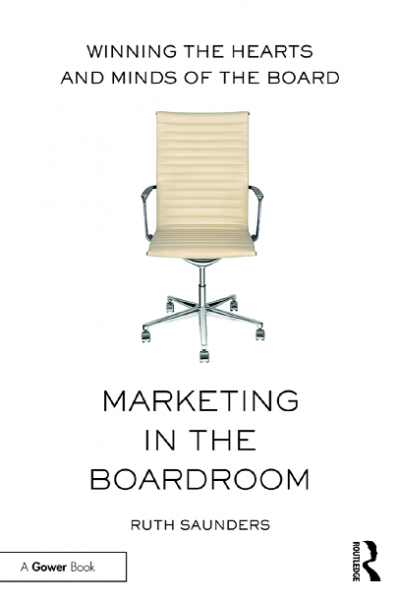
Why choose ‘who’ to target
When thinking about which customers to target, companies should not try to please everyone. Instead, they should focus their scarce resources on attracting and retaining those customers who will deliver the greatest return for the company – that is, those who will be most drawn to the brand, hence the easiest to recruit, and those who will buy the most products and therefore will be the most valuable.
By defining which customers to focus on – and crucially which not to focus on – Boards can ensure that more of their scarce resources are focused on creating a superior product or service experience that their most valuable customers will switch and stay loyal to – which in turn should deliver strong, sustainable growth.
The power of segmentation
The most effective way to select ‘who’ to target is to use customer segmentation, a marketing technique that categorises customers into ‘like groups’ that share similar underlying patterns of attitudes, needs and behaviours that drive their purchase decisions.
By doing so, marketers can determine:
- Where to focus scarce resources by identifying which customers generate the most value now, and which are likely to in the future.
- How to capture this value by identifying what these customers are looking for and what they need to be offered over and above competitors to encourage them to switch.
Engaging the Board
Engaging the Board early on helps to build Board buy-in in two important ways.
Firstly, the impact that these decisions will have on brand performance and ultimately company performance is likely to be high. If the team gets it right, brand performance is likely to be strong. If the team gets it wrong, brand performance will suffer. So it’s critical that everyone agrees that this is the right direction to take.
Secondly, recommendations can often extend beyond marketing, affecting all teams that have an impact on the customer experience. For example, they may affect how the sales team liaises with their customers, or how the digital team designs the online experience, or how the call centre and retail teams deliver the service experience. Therefore, marketers need to ensure that the segmentation approach and recommendations are understood and bought into at the highest level and across all cross-functional teams.
How to engage the Board
The Board’s primary objective is to protect and manage the company successfully, so Board members naturally have a mindset that is more analytical, risk-aware and short- to medium-term focused. They are also invariably time-starved, and so need to be able to assimilate new, recommended strategies succinctly and quickly.
Therefore, to engage the Board, marketers need to use thinking, rationale and language that the Board members will understand, with marketing strategies that are:
- Clear, in what they are recommending and why this makes sense to consider.
- Succinct, ideally showing the recommendations in a one-page storyline.
- Robust, supported with a compelling fact base that builds the Board’s confidence.
- Jargon-free, using the Board’s language rather than marketing jargon to make the case.
- Intuitive, in what is being recommended and why this is good for the business.
Creating an actionable segmentation solution
When creating a customer segmentation, it’s important that it meets a number of important characteristics. These include being:
- Able to address the business question that needs to be resolved – with the team selecting the segmentation approach (for example, attitudinal, behavioural, channel, demographics or economic) that will best help to resolve it.
- Value-based – by being linked with real-life economic data to identify how valuable and profitable each segment is.
- Actionable – by showing meaningful commercial differences in the types of products and services each segment prefers.
- True to real life – with each segment making intuitive sense in the real world.
- Brought to life – by containing a memorable number of core segments, each with succinct, relevant and memorable names, with all visualized on one page.
Once the optimal segmentation solution is chosen, the team should assess what it means for the business – by identifying the sweet spot between what customers want and what the company’s brands are known for and can deliver. By doing this, it can be used to resolve a myriad of business issues – including ‘Optimising a brand portfolio’, ‘Positioning brands for growth’ and ‘Creating the optimal channel solution’.
In summary
To be successful, companies should focus their scarce resources on attracting and retaining those customers who will deliver the greatest return for the company.
Customer segmentation is an effective way to select ‘who’ to target, and thus determine:
- Where to focus scarce resources by identifying which customers generate the most value now and which are likely to generate the most value in the future.
- How to capture this value by identifying what these customers are looking for and what they need to be offered over and above competitors to encourage them to switch
When conducted well and used at Board level to help define the company strategy, customer segmentation can be transformative at returning companies to growth.
The author
Ruth Saunders uses her 30 years of experience as a strategy consultant at McKinsey, marketer at P&G, advertising planner at Saatchi & Saatchi and market researcher at Mars Inc, to help clients be ‘On Point’.
She is a marketing and branding consultant, trainer, speaker and coach.
She is also the author of “Marketing in the Boardroom: Winning the Hearts and Minds of the Board” published by Routledge.
See Ruth’s discussions on Twitter.

Read more from Ruth
Own your own copy of Marketing in the Boardroom, which helps marketers to be more commercially credible and thereby more successful in the boardroom
Read more from Ruth
Own your own copy of Marketing in the Boardroom, which helps marketers to be more commercially credible and thereby more successful in the boardroom
